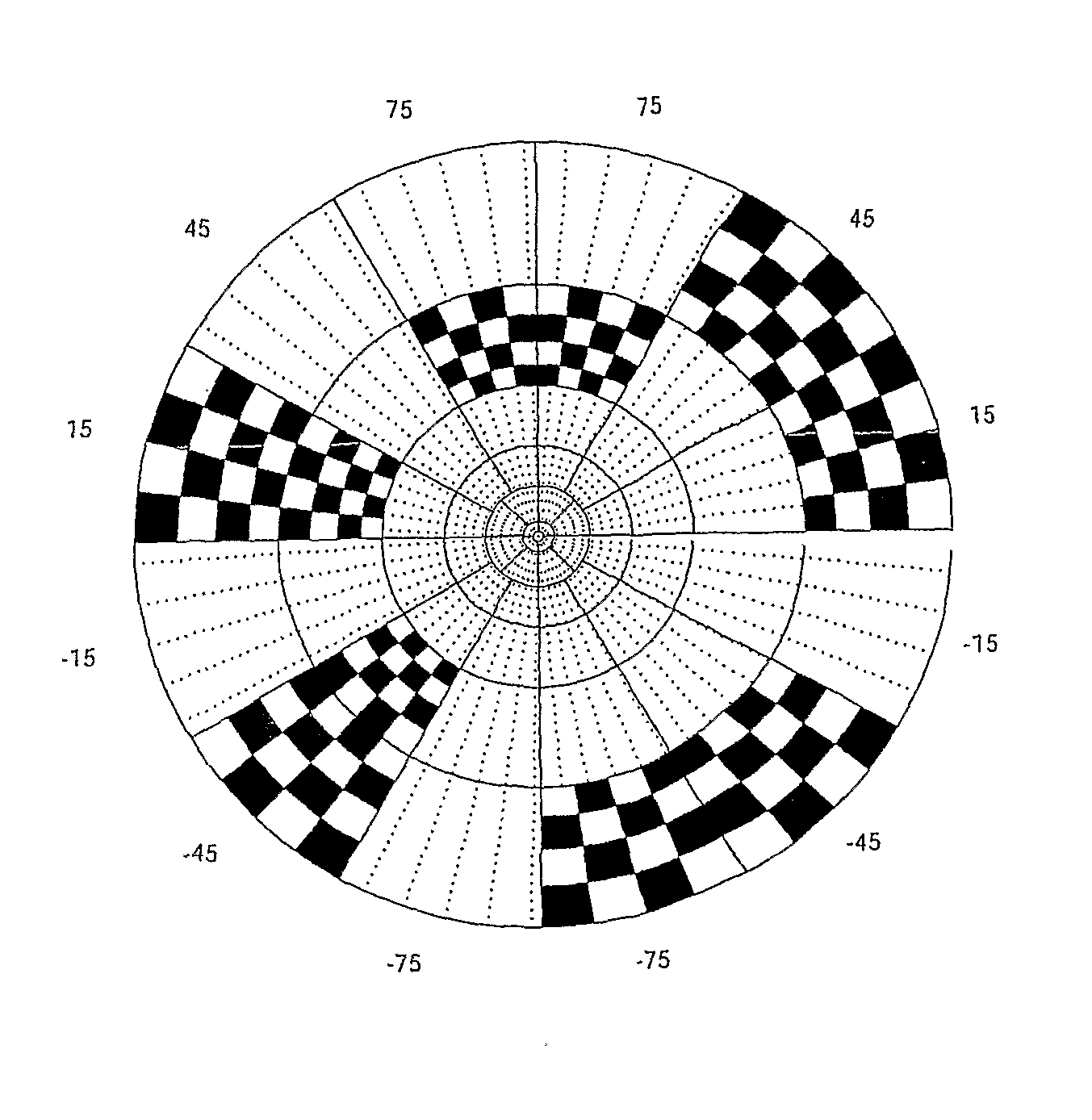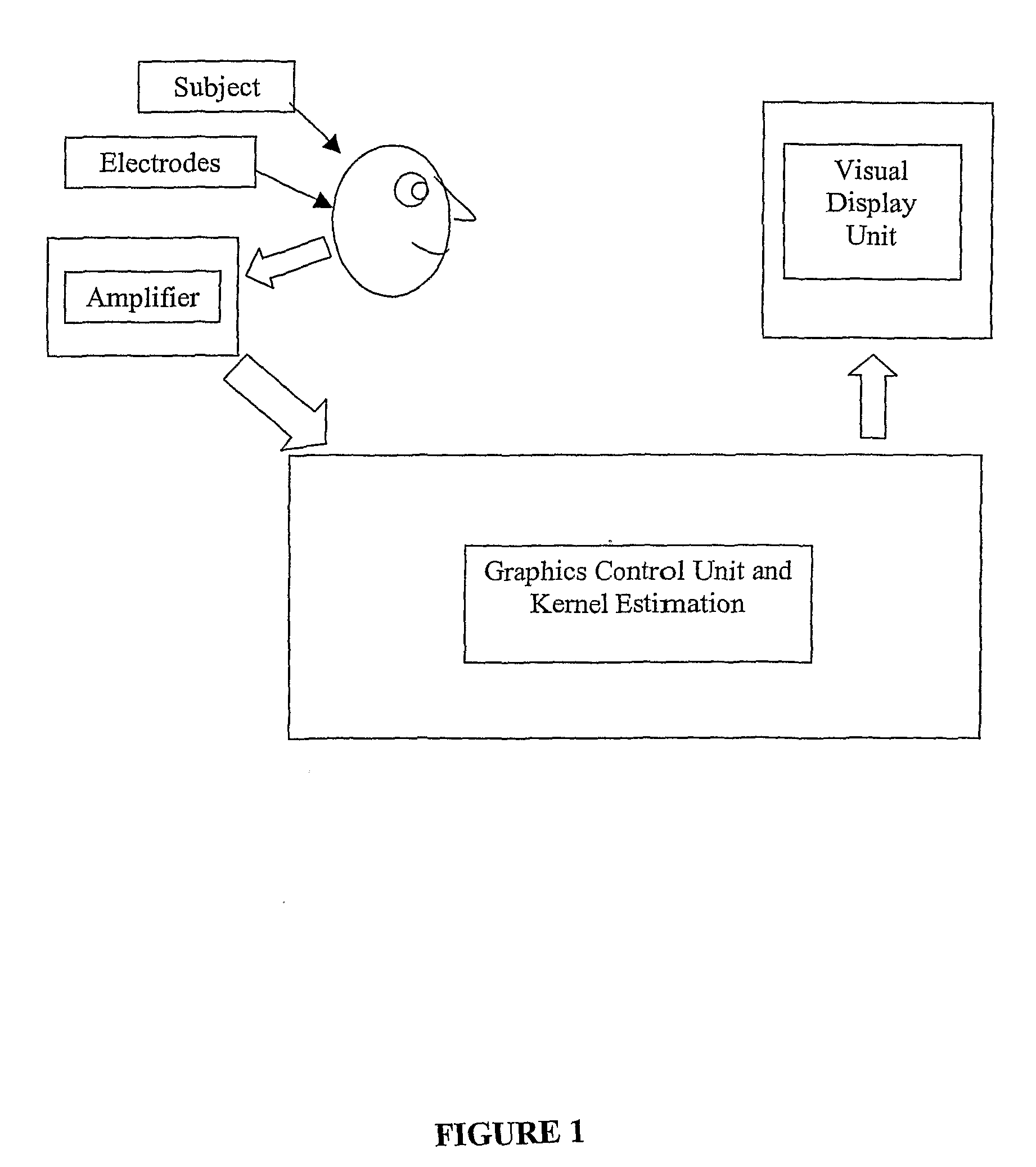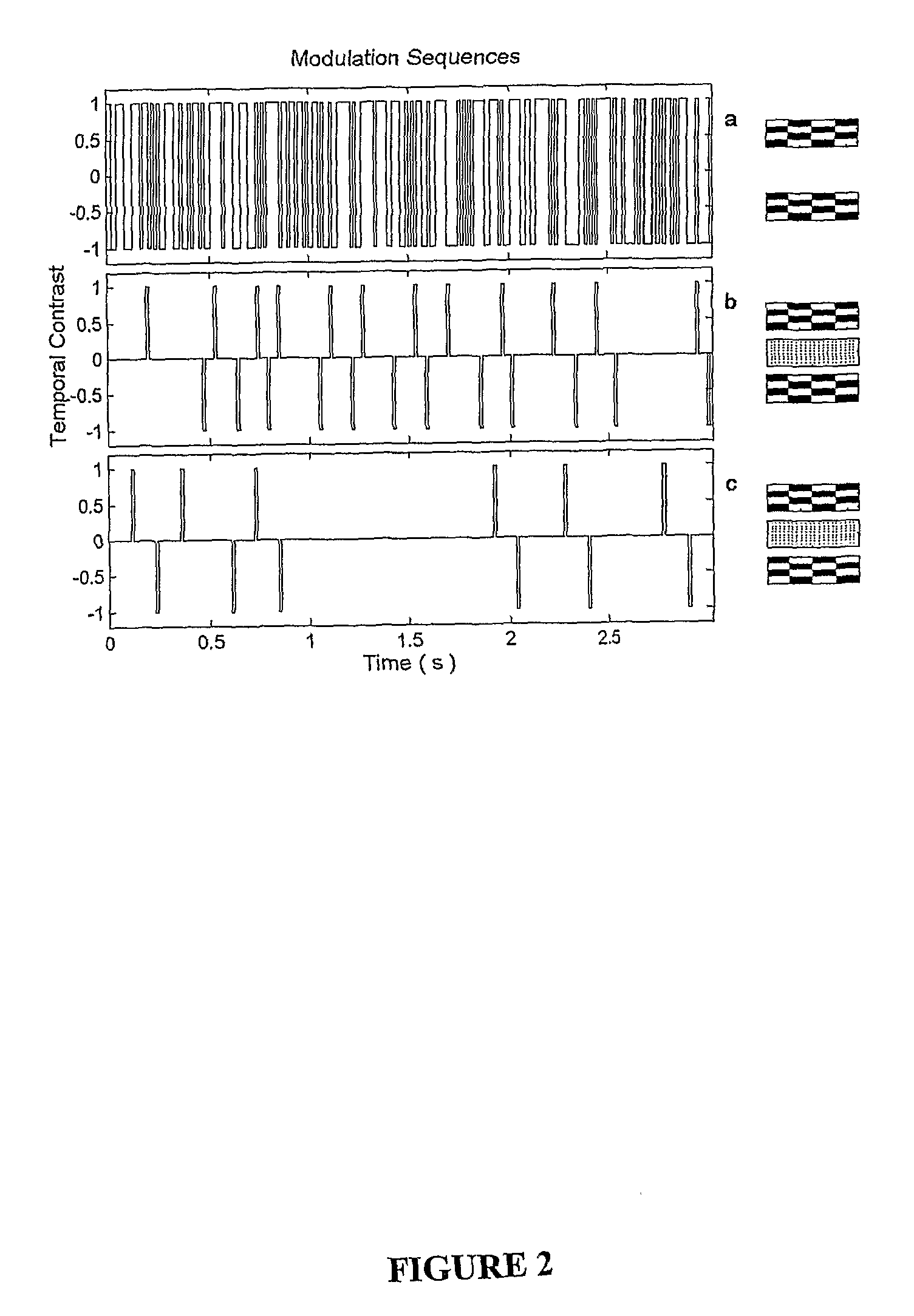Assessment of neural function
a neural function and function technology, applied in the field of neural function assessment, can solve the problems of short time required to set up monitoring means, inability to accurately assess the function of neural cells, so as to achieve the effect of improving the time required for measuring responses and maintaining the same level of accuracy
- Summary
- Abstract
- Description
- Claims
- Application Information
AI Technical Summary
Benefits of technology
Problems solved by technology
Method used
Image
Examples
example 1
Apparatus
[0095]A schematic of the basic system components forming an embodiment of the apparatus of the present invention is shown in FIG. 1. The major components are a display device presenting visual stimuli to one or both eyes, in the present non-limiting example to one eye only; a means for assessing cortical neural responses, in the present example electrodes; an amplifier for recording a visual evoked electrical potential; and a means for computing estimated coefficients of the linear and non-linear weighting functions characterising the response to the non-null stimuli. Thin arrows associate labels with objects while thick block arrows indicate the direction of information flow or control.
[0096]The test stimuli for each subject were presented on a video monitor at 75 pictures per second. Since the stimuli were presented on a video monitor it is common to refer to the sequence of pictures presented as a sequence of frames presented at a particular frame rate, in this case 75 f...
example 2
Pseudorandom Stimulus Sequences
[0098]The relevant feature of the temporally sparse nature of the pseudorandom stimulus sequences will be better understood by inspection of FIG. 2, which illustrates 3 types of pseudorandom stimulus sequences. These stimulus sequences are representative of the temporal activity of one stimulus region within the plurality of regions making up the whole stimulus. The upper panel (A) illustrates a binary sequence where the stimulus varies between two conditions. Such stimuli can be generated with a pseudorandom number generator with an even distribution and the probability of the stimulus being in either stimulus condition at a given time step was set to ½. The series of 1 and −1 values could illustrate pseudorandom alternation between two non-null stimulus states such as the reversed contrast checkerboards of FIG. 4. We did not use these temporally dense binary stimuli, but such stimuli are in common use, and so they are presented here for purposes of c...
example 3
Spatially Sparse Sequences
[0099]FIG. 3 illustrates the two spatially sparse visual stimulus variants for two particular non-limiting embodiments described here in which the face of a video monitor was divided into 56 parts demarked by the lines. In the tests described in the figures that follow subjects observed visual stimuli presented in each of the 56 regions and evoked potentials were recorded. The non-null stimuli were black and white checkerboard patterns presented within each region as shown in FIG. 4. Each region had its contrast modulated in time by different pseudorandom sequences, each 55 seconds long. For the binary sequences of FIG. 2 white checks are considered to have contrast 1 and black checks contrast −1. Thus the temporal modulation sequences caused the checks within each of the 56 regions to flip the sign of their contrast or remain the same contrast according to the state, 1 or −1, of the binary sequence at a given time step. For ternary stimuli the null stimulu...
PUM
 Login to View More
Login to View More Abstract
Description
Claims
Application Information
 Login to View More
Login to View More - R&D
- Intellectual Property
- Life Sciences
- Materials
- Tech Scout
- Unparalleled Data Quality
- Higher Quality Content
- 60% Fewer Hallucinations
Browse by: Latest US Patents, China's latest patents, Technical Efficacy Thesaurus, Application Domain, Technology Topic, Popular Technical Reports.
© 2025 PatSnap. All rights reserved.Legal|Privacy policy|Modern Slavery Act Transparency Statement|Sitemap|About US| Contact US: help@patsnap.com



